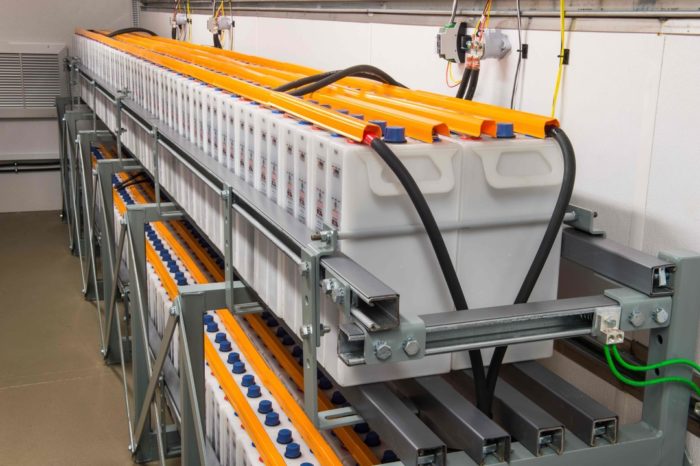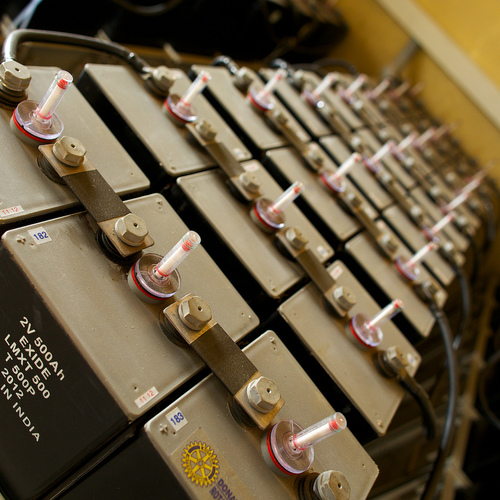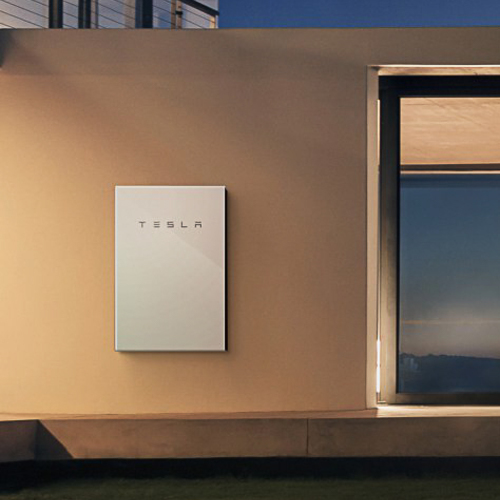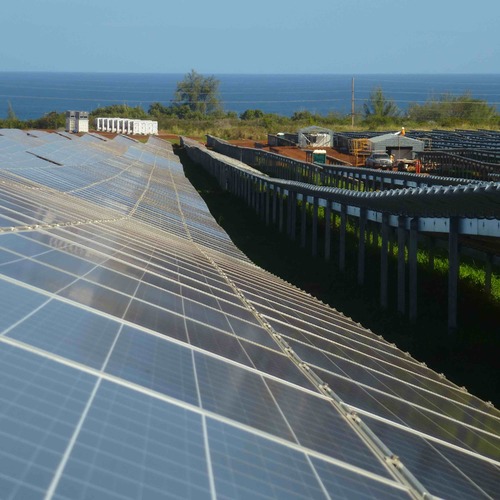
Image Credit: Dennis Schroeder/National Renewable Energy Laboratory
San Diego Gas & Electric (SDG&E) is proposing a novel way of integrating more battery storage on the grid to help manage electric loads more effectively: invite utility customers to install their own batteries and make it worth their while with a new rate.
According to a post at Greentech Media, SDG&E has made the proposal for a pilot program part of its distribution resource plan that it and two other investor-owned utilities in California were required to submit to regulators earlier this month.
All the details are not spelled out. But the basic idea is that customers who supplied their own batteries and allowed the utility to control them at certain times would earn a “new residential energy storage rate.”
The pitch comes as utilities look for ways to integrate an increasing number of photovoltaic (PV) systems on the grid, what are called distributed energy resources, or DERs. Batteries, whether they are jumbo utility-sized installations or simpler residential-sized units, can help even out the peaks and valleys of grid demand by storing energy at times of overproduction and sending some of that power back to the grid at times of very high demand.
By shaving peak loads, batteries can help utilities avoid expensive grid upgrades, such as new transmission lines and transformers.
A new business model
A variety of utility pilot projects around the country are designed to see how batteries can be brought into the mix and ease the sharp ups and downs in supply and demand. But, Greentech Media reports, the plan from SDG&E is unusual in that the utility would not own the batteries.
SDG&E calls this a “new business and revenue model for third-party ownership of distribution infrastructure,” Greentech Media said, which would help the utility replace lost earnings it would normally see from grid infrastructure projects.
James Fine, senior economist with the Environmental Defense Fund, called the plan “a little ray of light through the darkness of the traditional utility business model.” He told Jeff St. John of Greentech Media, “It’s a new way to sustain and support the utility operations, to get away from the incentive to put more steel in the ground.”
It’s also complex. The customers who supply the batteries, for example, must have access to information allowing them to share their stored energy while keeping enough for their own needs. How to include third-party providers, such as SolarCity and Tesla, also will be difficult to resolve.
St. John writes that while the distribution resource plans submitted by California utilities have a lot of new information about what distributed energy can do for the grid, they don’t spell out how much money customers and other third-party providers could earn.
What SDG&E’s plan does say, however, is this: “Customers taking advantage of the incentive will 1) accept a new dynamic rate that more acutely aligns charging and discharging with specific grid needs and 2) allow SDG&E to directly control the storage system’s charge and discharge functions during a limited number of high-load hours annually.”
The more control a customer is willing to cede to the utility, the more the customer would benefit.
Weekly Newsletter
Get building science and energy efficiency advice, plus special offers, in your inbox.















2 Comments
Install batteries, let the Utility control
Maybe it's a good idea. We assume the peak demand is what it is and spend $ to overcome it.
Of course, if there were a way to reduce demand during the peak without sacrificing anything, it might also be worth considering. But, the Utility rarely advocates reduced usage.
1) We could install even more PV and the demand would still be there but the Utility would see less of it during the peaks. The silver lining here is once there are more batteries for say peak demand reduction, those same batteries can be used to aid leveling the varying output of our PV panels, some would say for "free".
2) Our Utility proposes taking control not of our batteries but of our air conditioning. They'll turn it off for you during peaks when it suits them and when you need it most. To the Utility it makes it look like the demand during the peak has been reduced but really it's just been shifted until later. You still use about the same number of kwh and you can be quite uncomfortable for a few hours.
3) We could find ways to make our a/c units more efficient and the kwh needed to do the job would decrease.
4) We could seal and insulate our buildings and reduce Utility use during all of the seasons. Always a good idea.
5) ?
6) ?
Too bad we can't be more creative. Maybe algae? Wind? If it's economically justified and helps the environment, I like it.
This is a good idea, as long
This is a good idea, as long as they continue to explore other ideas as well.
Log in or create an account to post a comment.
Sign up Log in